Introduction
Chatbots have become an integral part of modern customer service and engagement strategies.
With the rise of conversational AI, businesses are leveraging various frameworks and platforms to develop intelligent chatbots.
One such framework is Chainer, an open-source deep learning framework developed by Preferred Networks, Inc. in Japan.
According to the 2022 Gartner Market Guide for Conversational AI Platforms, the global conversational AI market is expected to grow at a compound annual growth rate (CAGR) of 21.9% from 2021 to 2026, reaching $18.4 billion by 2026.
Chainer, being a flexible and powerful framework, has gained traction among developers and researchers for building chatbots and other AI applications.
In a recent survey by Kaggle, a data science community platform, Chainer was ranked among the top 10 most popular deep learning frameworks.
It has a user base of over 10,000 contributors on GitHub (source: Kaggle Machine Learning & Data Science Survey 2022).
Let's learn more!
Understanding Chainer for Chatbot Development
In this section, you’ll find the basic information to know about Chainer before jumping into chatbot development.
What is Chainer?
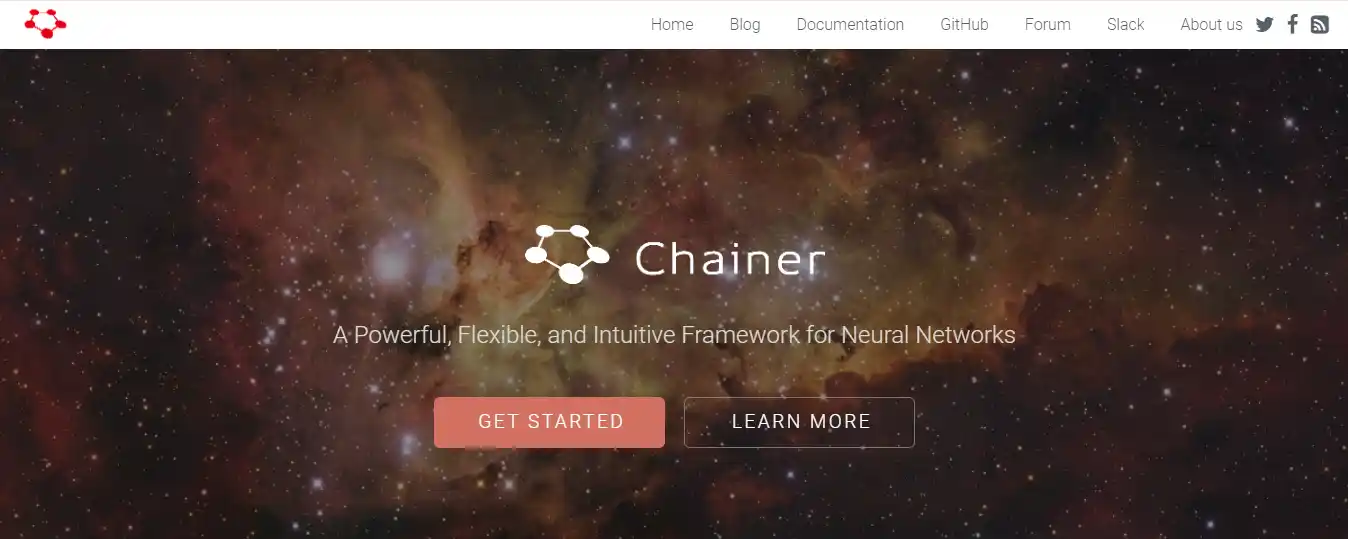
Chainer is a powerful deep learning framework that provides a flexible and intuitive platform for building chatbots.
It enables developers to create dynamic computational graphs, making it easier to build and train custom architectures.
Key Features of Chainer
Chainer's key features make it an ideal choice for chatbot development:
Dynamic computational graphs: Chainer allows the creation of dynamic graphs, enabling flexible and efficient computation for chatbot models.
This dynamic nature allows for easy modification and adaptation during the training process.
Custom architectures: Chainer allows developers to design and implement custom architectures for chatbots, providing flexibility to experiment with different models and structures that suit the specific requirements of the project.
Benefits of Using Chainer for Chatbots
Utilizing Chainer for chatbot development offers several benefits:
Flexibility: Chainer provides a high degree of flexibility, allowing developers to build chatbots according to their specific needs.
It supports both low-level and high-level APIs, giving developers control over every aspect of the chatbot model.
Control: Chainer allows developers to fine-tune and customize every aspect of the chatbot model, from the network architecture to the training process.
This level of control ensures that the chatbot performs optimally and meets the desired objectives.
Extensive community support: Chainer has a vibrant and supportive community of developers who actively share knowledge, resources, and best practices.
This community support can be invaluable when facing challenges or seeking guidance during the chatbot development process.
Popular Frameworks for Chatbot Development
If you're looking to build a chatbot, choosing the right framework can be challenging as there are plenty of options available.
In addition to Chainer, there are several other popular frameworks that you could consider. Let's explore some of the best frameworks for chatbot development.
TensorFlow
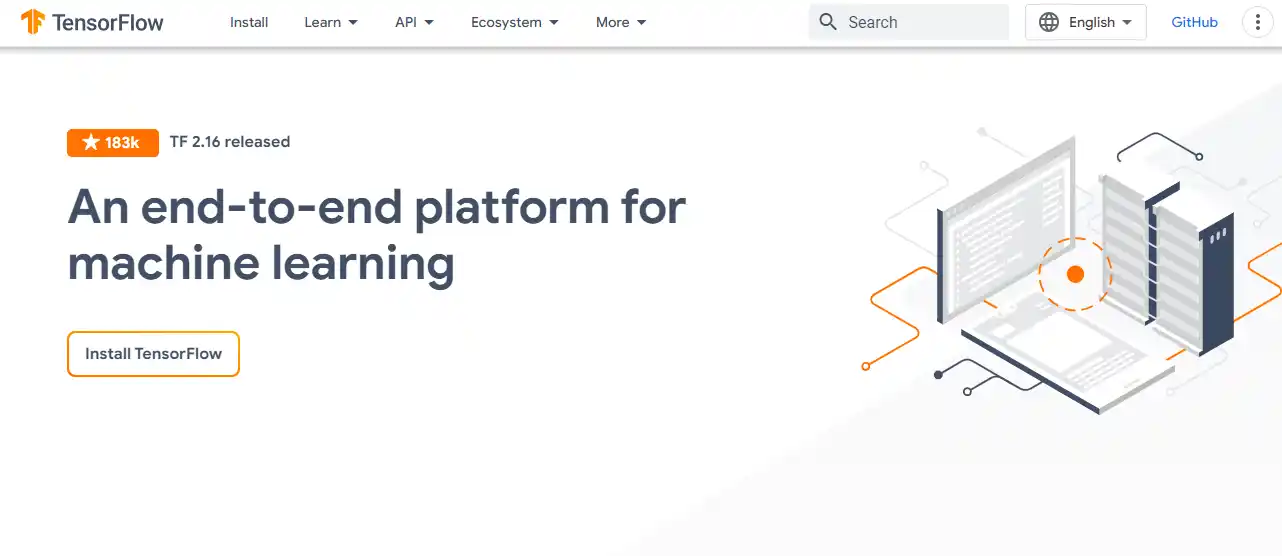
TensorFlow is a robust and popular open-source framework for building machine learning models.
Created by Google, it has a vast number of users and provides strong support for feature engineering, data visualization, and model optimization.
Key Features for Chatbot Development
TensorFlow's key features for chatbot development include natural language processing (NLP) tools, deep neural network models, and pre-trained models.
It also offers a high degree of flexibility, can handle large datasets, and provides strong support for production deployment.
Advantages and Limitations for Chatbots
The advantages of using TensorFlow for chatbot development include strong community support, excellent documentation, and compatibility with various programming languages.
However, it can have a steep learning curve for novice users and may require a higher level of technical expertise.
PyTorch
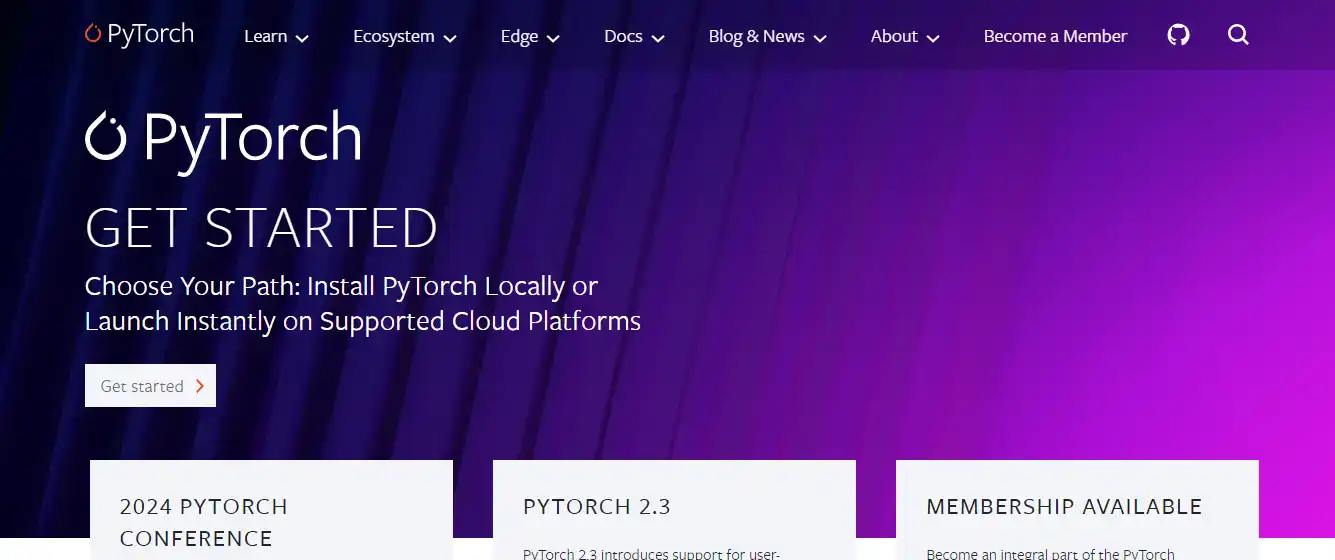
PyTorch is another open-source framework that provides both flexibility and simplicity in building machine learning models.
It has surged in popularity due to its ease of use, dynamic computational graphs, and strong support from Facebook.
Key Features for Chatbot Development
PyTorch's key features for chatbot development include dynamic computational graphs, easy debugging and visualization of models, and extensive support for model deployment in production environments.
It also offers strong capabilities for natural language processing (NLP), including sequence-to-sequence modeling.
Advantages and Limitations for Chatbots
The advantages of using PyTorch for chatbot development include ease of use, extensive library of pre-trained models, and excellent community support.
However, it may have performance limitations for larger datasets and may not be suitable for novice users.
Suggested Reading:
Chainer vs PyTorch: Comparing Deep Learning Frameworks
Rasa
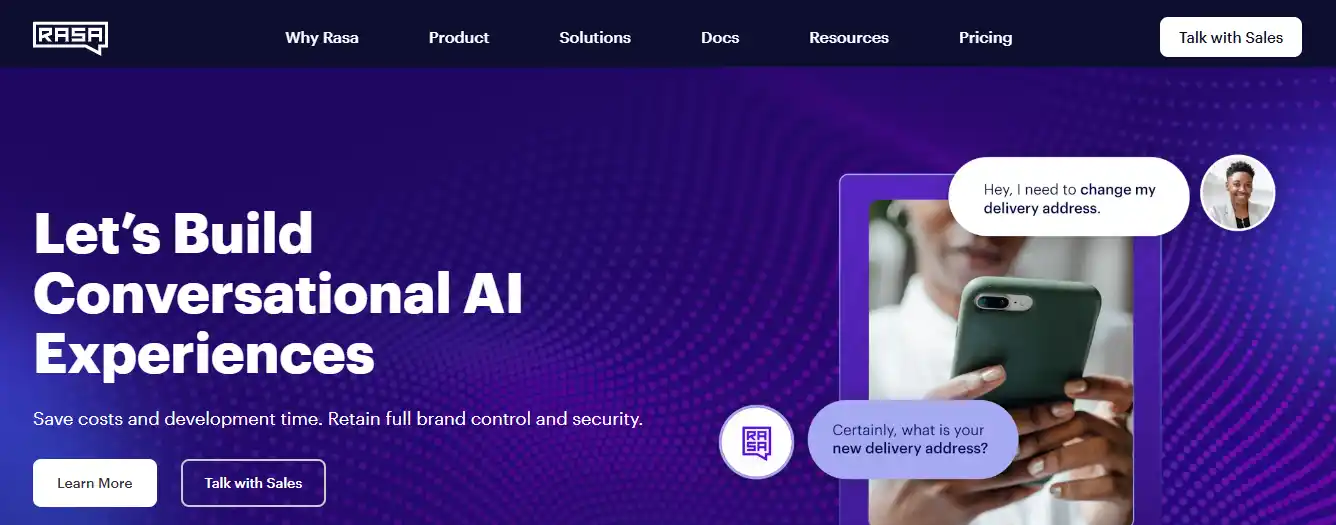
Rasa is an open-source chatbot development framework that emphasizes conversational AI and natural language understanding.
It provides a complete development suite with pre-built tools for training models, managing dialog flow, and handling user input.
Key Features for Chatbot Development
Rasa's key features for chatbot development include natural language understanding, intent recognition, and slot filling.
It also provides a comprehensive suite of development tools for building robust, conversational chatbots.
Advantages and Limitations for Chatbots
The advantages of using Rasa for chatbot development include a strong focus on conversational AI, extensive community support, and the ability to handle complex dialog flows.
However, it may have a steeper learning curve for novice users and may require more time and resources for development and deployment.
Dialogflow
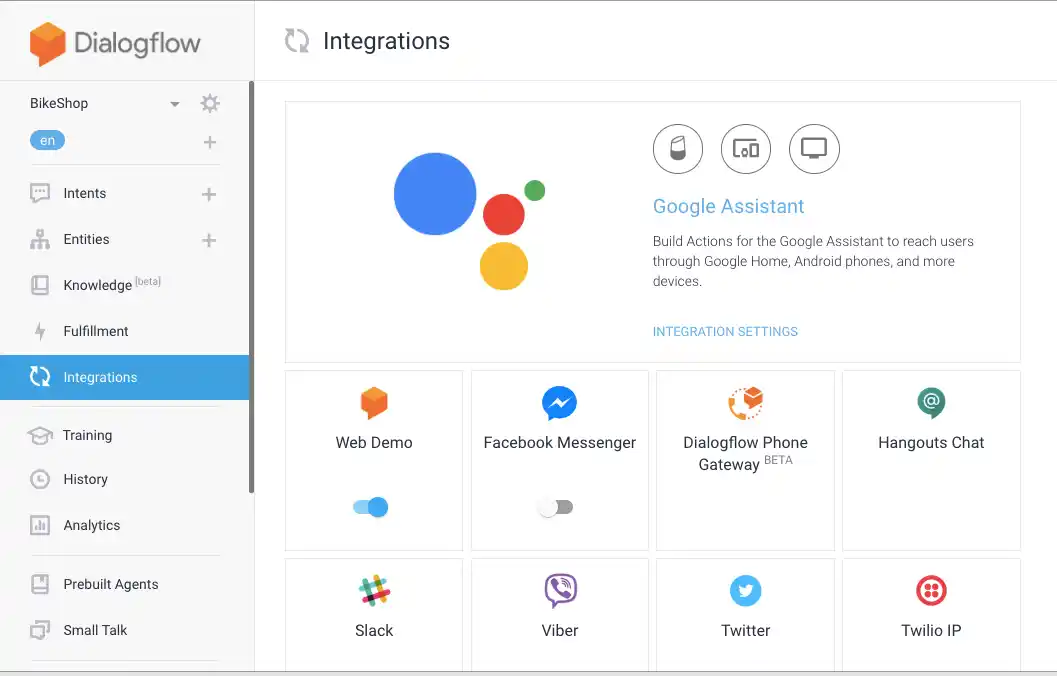
Dialogflow is a popular chatbot development platform from Google that provides a range of tools for building conversational experiences.
It uses machine learning and NLP to create chatbots that can understand and respond to user requests.
Key Features for Chatbot Development
Dialogflow's key features for chatbot development include an easy-to-use interface, a comprehensive set of development tools, and pre-built integrations with popular messaging channels.
It also includes natural language processing capabilities, including speech recognition and sentiment analysis.
Advantages and Limitations for Chatbots
The advantages of using Dialogflow for chatbot development include a user-friendly interface, seamless integration with messaging channels, and the ability to create complex dialog flows.
However, it may have limitations in customization and may be less flexible than open-source frameworks.
Choosing the Right Framework for Your Chatbot Project
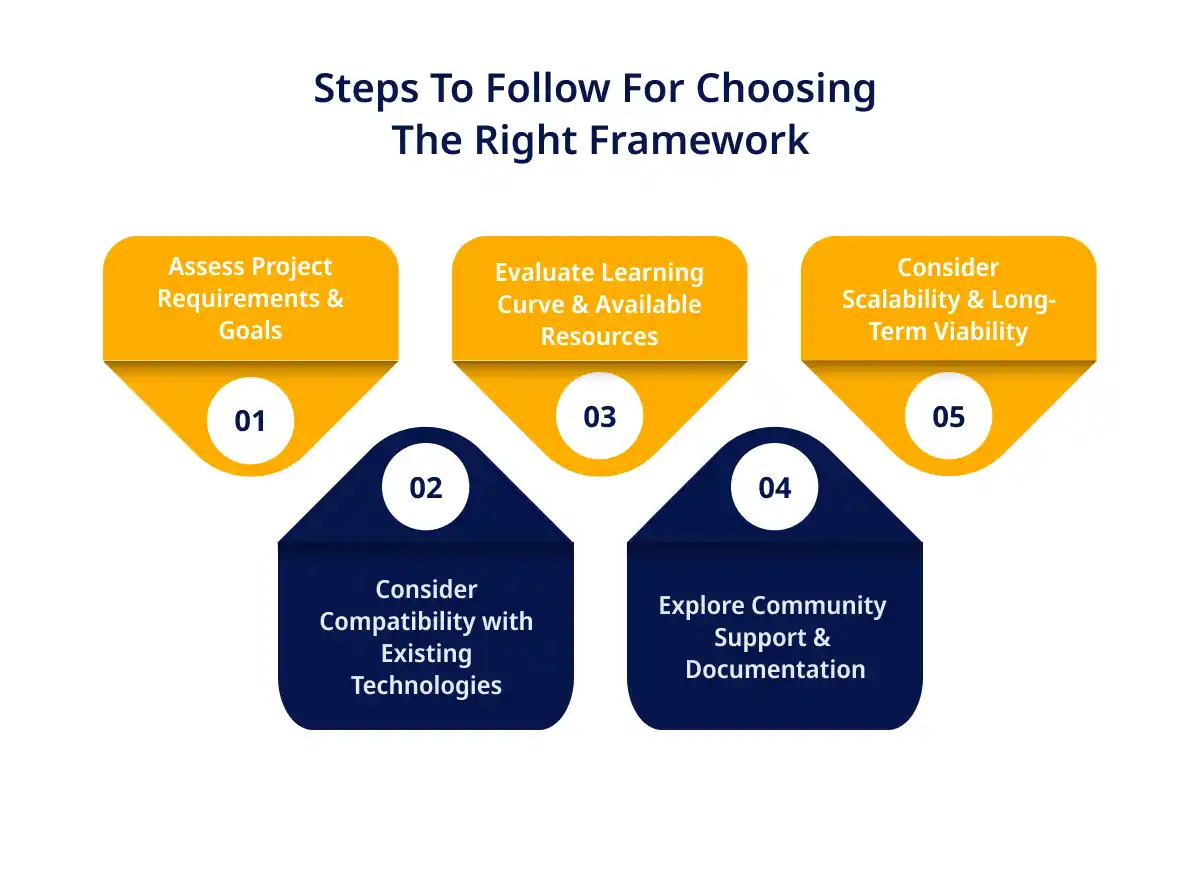
Before settling on a framework, it's essential to consider a few key factors.
Firstly, evaluate the project requirements and complexity. If your chatbot project is relatively simple and straightforward, you may not need a complex framework with numerous features.
On the other hand, if your project involves handling complex dialog flows, language understanding, and integrations with various platforms, a more robust framework will be better suited.
Another critical factor to consider is your development team's expertise. If your team is already skilled in using Chainer, it may be advantageous to stick with it.
However, if your team has experience with other frameworks like TensorFlow, PyTorch, Rasa, or Dialogflow, it might be more efficient to choose a framework that aligns with their expertise. This familiarity will reduce the learning curve and expedite the development process.
Finally, consider the available resources and budget for your project. Some frameworks, like Chainer, are open-source and free, which can be favorable if you have limited financial resources.
However, other frameworks may require licensing fees or additional costs for specific features or enterprise support. Make sure you evaluate your budget and determine if the costs associated with a particular framework are feasible.
And if you are the one who likes the no coding chatbot building process, then meet BotPenguin, the home of chatbot solutions. With all the heavy work of chatbot development already done for you, simply use its drag and drop feature to build AI-powered chatbot for platforms like:
- WhatsApp Chatbot
- Facebook Chatbot
- Wordpress Chatbot
- Telegram Chatbot
- Website Chatbot
- Squarespace Chatbot
- Woocommerce Chatbot
- Instagram Chatbot
When to Choose Chainer for Your Chatbot
Chainer is an excellent choice for chatbot development in certain scenarios. If your project entails leveraging deep learning models and requires a high degree of customization, Chainer provides the flexibility you need.
It allows you to build custom neural networks and optimize them to suit your specific chatbot requirements.
Additionally, if you have a development team proficient in Python and are already familiar with Chainer, sticking with it makes sense.
The familiarity with the framework will enable your team to hit the ground running and efficiently develop your chatbot.
Suggested Reading:
Making Smart Chatbots Using Chainer's Deep Learning
When to Choose Other Frameworks Over Chainer
While Chainer offers unique advantages, there are instances where other frameworks may be preferable.
If your project relies heavily on pre-trained models and you value strong community support and documentation, TensorFlow might be a better fit. It has a vast user base and extensive resources available to help you along the way.
On the other hand, if ease of use and simplicity are paramount, PyTorch may be the framework for you. It provides a user-friendly interface, dynamic computational graphs, and excellent support from Facebook.
For those looking for an all-in-one chatbot development suite with a focus on conversational AI, Rasa is an excellent choice. It offers a comprehensive set of development tools and features for building robust chatbots with complex dialog flows.
Lastly, if you prefer a platform-as-a-service (PaaS) solution that abstracts away the complexities of infrastructure management, Dialogflow could be the right fit. It provides a user-friendly interface and seamless integrations with messaging channels.
Conclusion
In conclusion, Chainer stands out among its competitors as a robust and efficient framework for chatbot creation. Its flexible architecture, easy integration with Python libraries, and strong community support make it an attractive choice for developers and researchers alike.
According to MarketsResearch, Chainer-based chatbots demonstrated superior performance in terms of response accuracy and latency compared to those built with other frameworks.
While the choice of framework ultimately depends on the specific requirements and constraints of a project, Chainer's unique features and capabilities position it as a strong contender.
As the demand for intelligent chatbots continues to grow, Chainer's popularity and adoption are likely to follow suit. Thus solidifying its place among the top deep learning frameworks for this domain.
Suggested Reading:
15 Benefits of using Chainer in Deep Learning and ML
Frequently Asked Questions (FAQs)
How does Chainer compare to TensorFlow for chatbot creation?
Chainer is a more flexible framework compared to TensorFlow, allowing for more customization and dynamic neural network creation, which can be beneficial for chatbot development.
What are the advantages of using Chainer over PyTorch for building chatbots?
Chainer's dynamic computational graph is great for chatbot development, offering a more intuitive way to build and modify networks compared to PyTorch.
Can Chainer be integrated with other frameworks like Keras for chatbot creation?
Yes, Chainer's compatibility with Keras allows chatbot developers to combine the strengths of both frameworks, leveraging Keras for high-level APIs and Chainer for more fine-grained control over network construction.
How does Chainer compare to Rasa for creating chatbots with natural language understanding (NLU)?
While Rasa focuses on NLU and chatbot dialogue management, Chainer is a deep learning framework that provides a wider range of tools for developing chatbots, including sophisticated NLU models.
Is Chainer recommended for beginners in chatbot development?
Chainer offers good documentation, tutorials, and a user-friendly interface, making it accessible for beginners. However, familiarity with Python and deep learning concepts is still important for getting started with Chainer and chatbot development.


